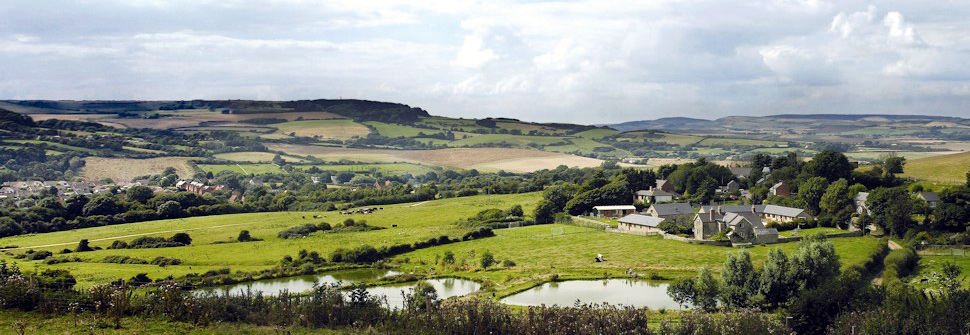Havenstreet
Situated on a road of great scenic beauty, the village is surrounded by large areas of Forestry Commission Land (Firestone, Briddlesford, Combley), and numerous copses such as Chillingwood and Kittenocks. Prior to the bridging of the creek at Wootton this route would not only have been the main means of communication between Ryde and Newport, but also in earlier times between the ancient settlements of St. Helens and Carisbrooke.
There have been various conjectures as to the origin of the name Hethenstreet, as it was called in mediaeval days; possible derivations are from the Old English haeden (heathen) street or track, or the street or track through heathland.
The building of the railway from Ryde to Newport in 1875 increased the importance of the village, a station being established on its outskirts, and the line providing an easy means of transport for passengers and goods. The station was rebuilt in 1926, and a loop line constructed to facilitate the passage of the increasing traffic.
The line was unfortunately closed in later years, but a group of railway enthusiasts undertook the re-instatement of the section between Havenstreet and Wootton stations, obtaining steam engines and rolling stock from the old railway company. It is now possible to travel by steam train for a few miles through wooded country, and this provides an attraction in holiday times, and is well patronised. Between 1850 and 1920 a considerable amount of building took place in Havenstreet.
Longford Hospital - the original house was built by a Manchester industrialist who came to live here upon his retirement. In 1886 he had a small gas-works built near the railway station; the building remains but the gas-holder is no longer in existence. Longford Cottages were provided for the gas-works staff, and gas lighting was installed in the village. Longford House eventually became a sanatorium for Island tuberculosis patients, an annexe for children being added in 1957. It is now a Mental Hospital for women.
In 1885 the same benefactor erected Holmdale for the benefit of the villagers. Known at that time as the Longford Institute it comprised a library and reading rooms, with billiard and smoking rooms. It has seen many changes over the years - Temperance Hotel, a base for hired horses and carriages; bus depot; Nursing Home, and Guest House; it is now known as the White Owl Restaurant.
Hillcrest was originally a bakery with a wood-fired oven, but is now a private house.
A Carpenter's and Wheelwright's shop, now a car show-room, was built probably in the 18th century; a conveyance document dated 1752 is in existence.
The Methodist Chapel was built in 1869 and demolished in 1959, the old Sunday School now being used for services. St. Peter's Church, built in 1857, was designed by T. H. Hellyer; it is now administered in conjunction with the parish of Swanmore.
The White Hart Inn stands at the centre of the village, close to the main concentration of older buildings. The Inn has been extensively renovated, but there are traces of an old stone structure at the back and at one end.

